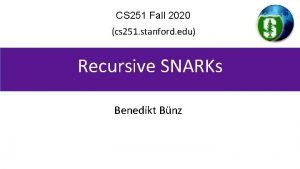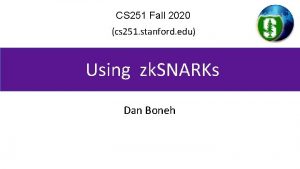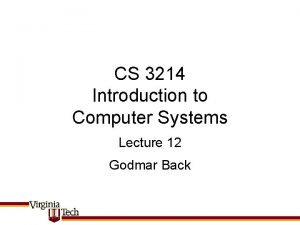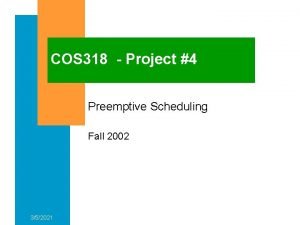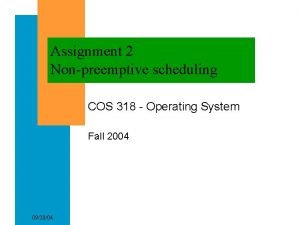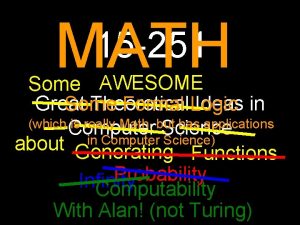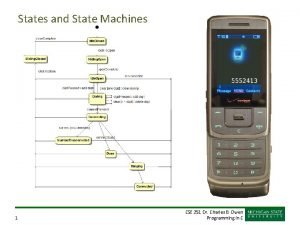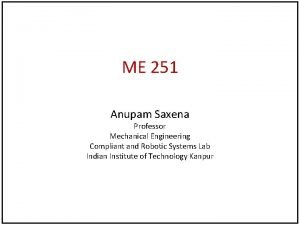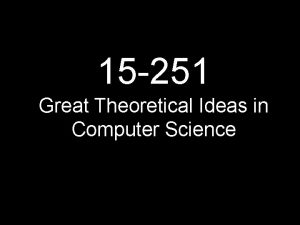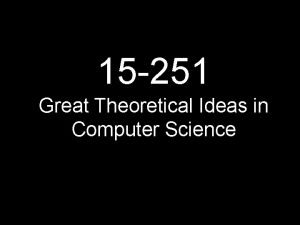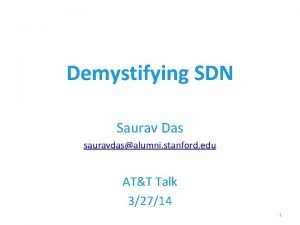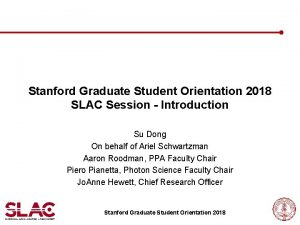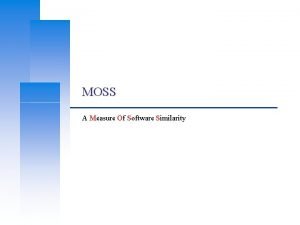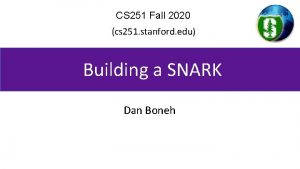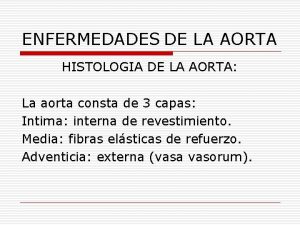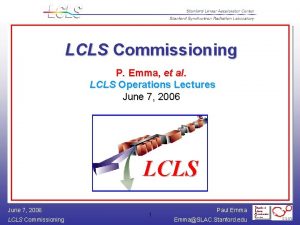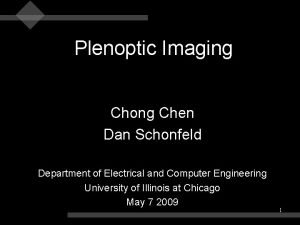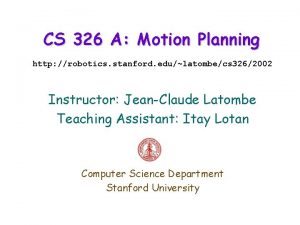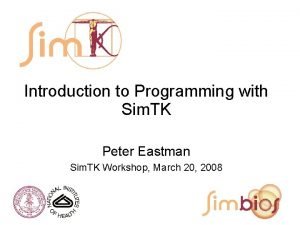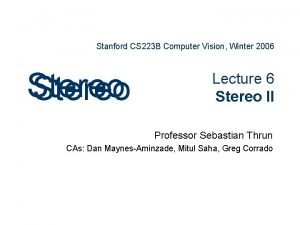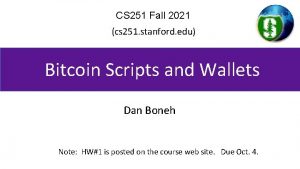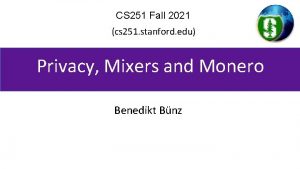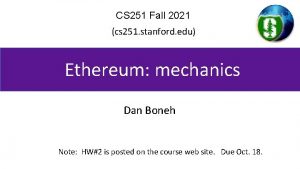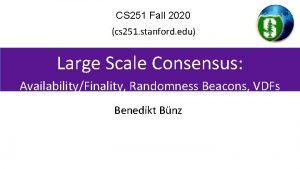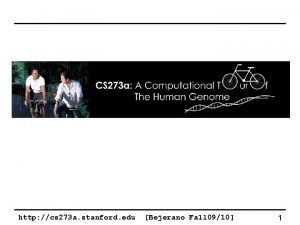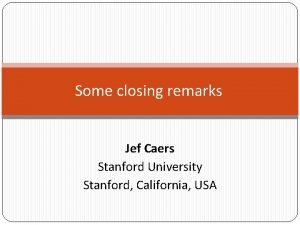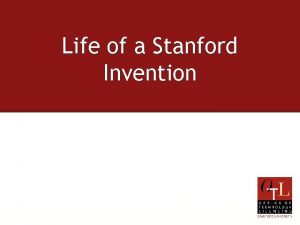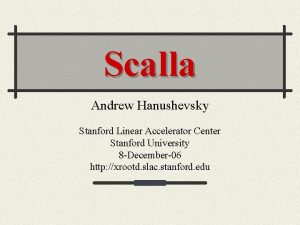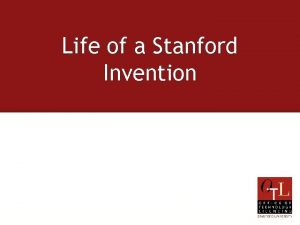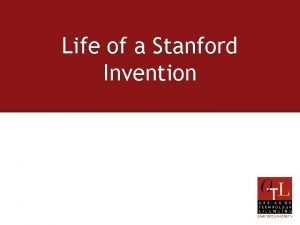CS 251 Fall 2021 cs 251 stanford edu






![A simple PCP-based SNARK [Kilian’ 92, Micali’ 94] A simple PCP-based SNARK [Kilian’ 92, Micali’ 94]](https://slidetodoc.com/presentation_image_h2/87da97794054b2be1886a6a1bd2d0f8c/image-7.jpg)







































- Slides: 46

CS 251 Fall 2021 (cs 251. stanford. edu) Building a SNARK Dan Boneh

Recap: zk-SNARK applications Private Tx on a public blockchain: • Confidential transactions • Tornado cash, Zcash, Iron. Fish • Private Dapps: Aleo Compliance: • Proving solvency in zero-knowledge • Zero-knowledge taxes Scalability: privacy in zk-SNARK Rollup (next week)

(non-interactive) Prover Preprocessing argument systems Verifier accept or reject

Preprocessing argument System •

Requirements (informal) accept or reject

SNARK: a Succinct ARgument of Knowledge • short “summary” of circuit
![A simple PCPbased SNARK Kilian 92 Micali 94 A simple PCP-based SNARK [Kilian’ 92, Micali’ 94]](https://slidetodoc.com/presentation_image_h2/87da97794054b2be1886a6a1bd2d0f8c/image-7.jpg)
A simple PCP-based SNARK [Kilian’ 92, Micali’ 94]

A simple construction: PCP-based SNARK •

Converting a PCP proof to a SNARK Merkle 1 hash output accept or reject Problem: interactive

Making the proof non-interactive The Fiat-Shamir transform: • public-coin interactive protocol ⇒ non-interactive protocol public coin: all verifier randomness is public (no secrets) msg 1 r msg 2 choose random bits r accept or reject

Making the proof non-interactive • generate msg 1 generate msg 2 Fiat-Shamir: certain secure interactive protocols � non-interactive

Why is this an argument of knowledge? • (can skip)

Are we done? •

Building an efficient SNARK

General paradigm Many SNARKs are built in two steps: polynomial interactive oracle proofs (poly-IOP) polynomial commitment scheme (zk)SNARK for general circuits

Recall: commitments •

(1) Polynomial commitment schemes •

(1) Polynomial commitment schemes •

(1) Polynomial commitment schemes Properties: • Binding: cannot produce two valid openings (f 1, r 1), (f 2, r 2) for comf. • eval is knowledge sounds (can extract • optional: • commitment is hiding • eval is zero knowledge (f, r) from a successful prover)

Constructing polynomial commitments • simple construction without this requirement

Component 2: Polynomial IOP •

(2) Polynomial IOP commit ⋮ commit

Properties •

The resulting SNARK Poly-IOP params: t = #polynomials, q = # eval queries in verify The SNARK: • During interactive phase of poly-IOP: send t poly commitments • During poly-IOP verify: run poly-commit eval protocol q times • Use Fiat-Shamir to make the proof system non-interactive Length of SNARK proof: t poly-commits + q eval proofs SNARK verify time: q poly eval proof verifications + time(IOP-verify) SNARK prover time: t poly commits + time(IOP-prover)

Constructing a Poly-IOP: • t+q=4

Some useful gadgets •



Product check on H (unoptimized)

PLONK: a poly-IOP for a general circuit

Step 1: compile circuit to a computation trace (gate fan-in = 2) The computation trace: inputs: 77 Gate 0: Gate 1: Gate 2: (Gate 2) 7 11 (Gate 1) (Gate 0) 5 5 6 6 6 5, 6, 1 5 , 6 , 11 6, 1, 7 11, 7, 77 1 1 example input left inputs right inputs outputs

Encoding the trace as a polynomial • inputs: Let’s see how … Gate 0: Gate 1: Gate 2: 5, 6, 1 5 , 6 , 11 6, 1, 7 11, 7, 77

Encoding the trace as a polynomial • inputs: Gate 0: Gate 1: Gate 2: 5, 6, 1 5 , 6 , 11 6, 1, 7 11, 7, 77

Encoding the trace as a polynomial • inputs: degree(P) = 11 Gate 0: Gate 1: Gate 2: 5, 6, 1 5 , 6 , 11 6, 1, 7 11, 7, 77

Step 2: proving validity of P (commitment) Prover needs to prove that P is a correct computation trace: (1) P encodes the correct inputs, (2) every gate is evaluated correctly, (3) the wiring is implemented correctly, (4) the final output is 0 inputs: Gate 0: Gate 1: Gate 2: 5, 5, 6, 11, 6, 6, 1, 7, 1 11 7 77

Proving (1): P encodes the correct inputs •

Proving (1): P encodes the correct inputs •

Proving (2): every gate is evaluated correctly •

Proving (2): every gate is evaluated correctly •

Proving (2): every gate is evaluated correctly (commitment) •

Proving (3): the wiring is correct •

Proving (3): encoding the circuit wiring •

Reducing wiring check to a linear degree •

The final (S, P, V) SNARK • (commitment) gates: inputs: wires: output:

Many extensions … • Plonk proof: a short proof (O(1) commitments), fast verifier • Can handle circuits with more general gates than + and × • PLOOKUP: efficient SNARK for circuits with lookup tables • The SNARK can easily be made into a zk-SNARK Main challenge: reduce prover time

END OF LECTURE Next lecture: scaling the blockchain
 Cs 251 stanford
Cs 251 stanford Cs251 stanford
Cs251 stanford Cs251
Cs251 Highwire stanford edu
Highwire stanford edu Tgfoa
Tgfoa Cs 3214 fall 2021
Cs 3214 fall 2021 Ucla fall 2021
Ucla fall 2021 Cos 318°
Cos 318° Cos 318
Cos 318 Edu.sharif.edu
Edu.sharif.edu 15-251
15-251 Aae 251
Aae 251 Amedd enlisted commissioning program
Amedd enlisted commissioning program Em nada ponho a minha fé numero
Em nada ponho a minha fé numero Cs 251
Cs 251 Half lap muff coupling
Half lap muff coupling 15-251
15-251 Legge 251 del 2000
Legge 251 del 2000 15 251
15 251 Edu.ro programe scolare 2020-2021
Edu.ro programe scolare 2020-2021 Stanford gps lab
Stanford gps lab Stanford compliance checker
Stanford compliance checker Conformity examples
Conformity examples Cs246 stanford
Cs246 stanford Abu ghraib
Abu ghraib Stanford
Stanford Stanford sdn
Stanford sdn Cs 154 stanford
Cs 154 stanford Yang liu stanford
Yang liu stanford Stanford prison experiment cells
Stanford prison experiment cells Cs246
Cs246 Slac student loan
Slac student loan Moss stanford
Moss stanford Cs251 stanford
Cs251 stanford Stanford design process
Stanford design process Cliclofosfamida
Cliclofosfamida Emma kane stanford
Emma kane stanford Stanford bioengineering
Stanford bioengineering Stanford security awareness
Stanford security awareness Stanford vsp
Stanford vsp Dan schonfeld
Dan schonfeld Cs 326 stanford
Cs 326 stanford Peter eastman stanford
Peter eastman stanford Stanford university
Stanford university Britt stanford rit
Britt stanford rit Feifei li stanford
Feifei li stanford Stanford hci group
Stanford hci group
